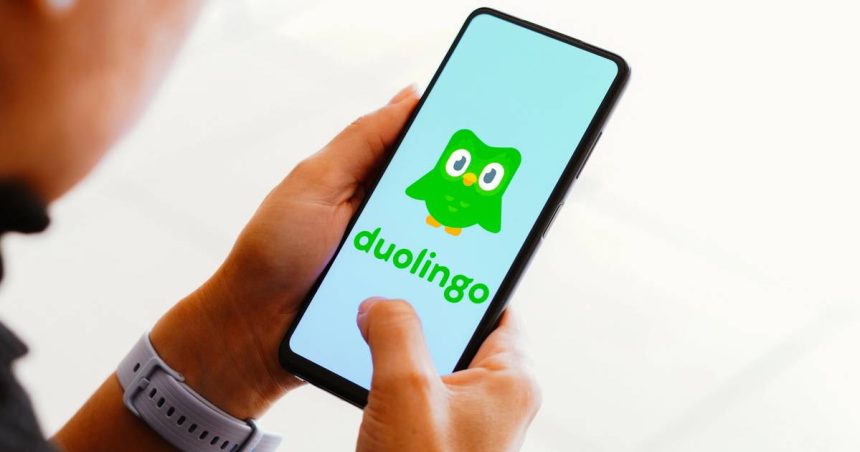Get marketing news you’ll actually want to read
The email newsletter guaranteed to bring you the latest stories shaping the marketing and advertising world, like only the Brew can.
Duolingo showed strong revenue growth in its Q2 earnings this week.
The language-learning app reported $3.7 million in net income, up from a $15 million net loss in the same period last year. Revenue increased 44% to nearly $128 million, and Duolingo raised its full-year guidance to $510 million–$516 million in revenue, up from the $500 million–$509 million forecast last quarter.
Duolingo reported 5.2 million paid subscribers, a 59% improvement YoY. It also saw its monthly active user count jump to 74 million, a 50% YoY increase.
The brand’s strong earnings come after a year of topical marketing, particularly on TikTok, where Duolingo has a following of 7.3 million. Duolingo frequently creates TikTok content around trends and memes on the platform, with many of its videos featuring its green owl mascot, Duo. “Our brand is very unhinged,” Emmanuel Orssaud, Duolingo’s VP of marketing, told us.
Recently, Duolingo flew onto the Barbie bandwagon, creating several TikToks around the film; the brand’s sound effect makes a brief appearance in the movie during a scene where one character is learning Spanish. The brand brought its mascot Duo to the premiere in LA and created an ad that’s run before Barbie screenings across US theaters.
Besides activating around Barbie, Duolingo is working on “the internationalization of our strategy,” according to Orssaud. The brand is rolling out TikTok accounts across the globe. “As of today, actually, we launched our TikTok in Germany,” he said on Wednesday.
Marketing was a central focus of Duolingo’s shareholder letter in Q2. In it, Duolingo’s CEO Luis von Ahn touted the company’s “social-first marketing,” stating that it has “tested our way to a marketing strategy that inserts our brand into pop culture events and social media moments in order to expose it to new audiences and drive word-of-mouth growth.”
He added that Duolingo does not “sell directly” in its social campaigns. “This strategy is relatively low-cost, and has generated outsized returns in terms of social media impressions, press coverage, and, ultimately, new users to Duolingo.” According to von Ahn, the brand’s social media impressions have grown 150% YoY.
Orssaud said Duolingo’s marketing is done primarily in-house with a team of 40 people. Two-thirds of the team is in the US, with the other third in different countries.
In addition to growing its TikTok presence across the globe, Duolingo is promoting another character, Lily, in TikTok posts after seeing success with her on Douyin, TikTok’s Chinese equivalent.
“On Douyin, content with Duo wasn’t getting as much traction. Organically, people were posting more about Lily. We saw that trend in China,” Orssaud said, noting that the brand is “introducing her in other countries’ TikTok accounts now.”
Read the full article here










